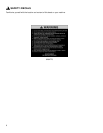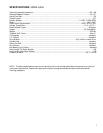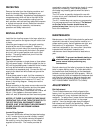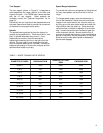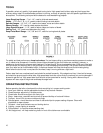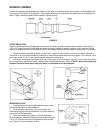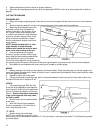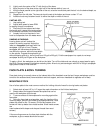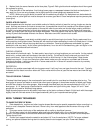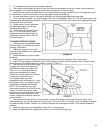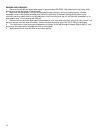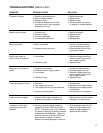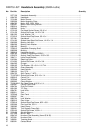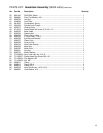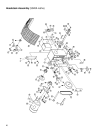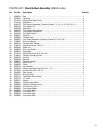14
5. Make a block the same diameter as the face plate, Figure 9. Both glue block and workpiece should have good
flat surfaces for gluing.
6. Glue the block to the workpiece. Avoid using brown paper or newspaper between the block and workpiece. It
may work fine if you are using scrapers, but a slight catch with a bowl gouge can separate the two.
NOTE: When using a glue block, be careful with the adhesive you select. Dry workpieces can be bonded with
ordinary white or yellow glue but must be clamped to ensure a good bond. Green workpieces require cyanoacrylate
(super glue).
FACEPLATE OR CHUCK?
While faceplates are the simplest, most reliable method of holding a block of wood for turning, chucks can also be
used. As there are dozens of chucks to choose from, the woodturner should first consider all the different types of
turning that will be done, and read reports or discuss with other turners who own chucks before making a decision.
A chuck is not a requirement but is handy when working on more than one piece at a time. Rather than removing
screws, you simply open the chuck and change workpieces. The most popular ones are four jaw scroll chucks with a
variety of jaws to accomodate different size tenons. Most also come with a screw chuck as well.
WOOD SELECTION
Firewood is the cheapest, most widely available stock to use while learning to turn bowls. Simply waste wood for a
while practicing turning techniques. Develop skill with each tool before attempting to make a finished piece. It is best
to start with dry wood, without worrying about drying or distortion. Once turning becomes comfortable, try green
wood which cuts very easily. As the turner gains experience, he or she will find extraordinary grain and figure in the
form of burls, crotches and bark inclusions.
CHECKS & CRACKS
Green wood will check and crack. For best results, leave logs in as long lengths as you can handle. As the material
starts to dry, surface cracks will develop on the ends of the log. Cut off two to three inches and you should find
good, sound wood. Also cut the log in half along the pith to avoid having it in the finished piece. Most checks
radiate from the pith. As you turn bowls from green wood, make sure you maintain a consistent wall thickness
throughout the piece. Leaving a piece thick in some areas and thin in others will cause the wood to dry unevenly
and promote checks and cracks.
DISTORTION
Distortion is a problem associated with turning green wood. It will vary from one type of wood to the next. Typically,
fruitwoods tend to distort more than others do. It also varies with the time of year the tree was cut and how the logs
are stored.
TOOLS FOR BOWL TURNING
The deep fluted bowl gouge is the most essential and versatile tool for most bowl and faceplate style turning. The
bowl gouge is heavier and easier to control than other types of gouges. It also allows removal of wood much faster
and with less vibration than other gouges. Most average sized bowl work can be accomplished with a 3/8" or 1/2"
bowl gouge. A 1/4" bowl gouge is best suited for smaller bowls and light finishing cuts. Larger 3/4" and 1" bowl
gouges are only used for extremely large pieces.
Large domed scrapers can also be used to help clean up the interior surfaces of bowls. A light touch with the scraper
slightly tilted will eliminate some of the ridges occasionally left by an inexperienced bowl gouge.
BOWL TURNING TECHNIQUES
TO SHAPE OUTSIDE OF BOWL:
1. Odd shaped burls, crotches and other irregular shaped blanks require special preparation before mounting in a
chuck or onto a faceplate. Remove the bark, if there is any, from what appears to be the center of the top of the
workpiece.
2. Drive spur center into the top of the workpiece with a mallet or dead blow hammer.
3. Slip the spur center into the headstock taper and bring the tailstock with a live or ball bearing center into
position. Lock the tailstock to the bed and advance the spindle in order to seat the cup center into the workpiece.
Tighten the quill lock.
4. Position tool support below the centerline and about 1/4" from the workpiece. (NOTE: For larger outboard
turning, an optional outboard turning stand is used to place the tool support; see your Powermatic dealer).



